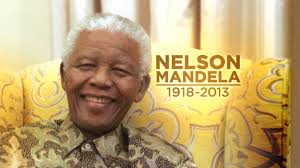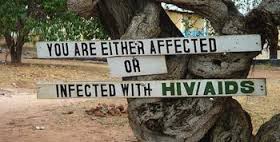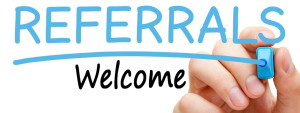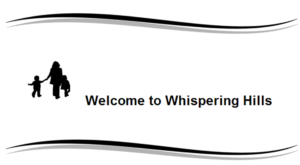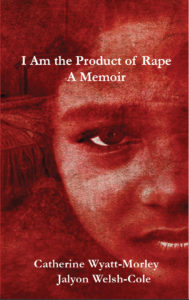
Nutrition and Ways to Stay Healthy
Nutrition and Ways to Stay Healthy
Having good nutrition carries with you throughout life. Something that we eat today could have a negative effect on us in the future. A balance diet consists of consuming fresh fruits and vegetables. Be sure to choose lean meats like poultry and fish, as well as other proteins like beans, eggs, and nuts. Avoid whole milk and foods that are high in cholesterol, trans-fats, saturated fats, high sodium (salt), or added sugar.
Tips for Maintaining a healthy Diet
-
Set yourself up for success
-
Moderation is the key
-
Fill up on colorful fruits and vegetables
-
Eat more healthy carbs and whole grains
-
Enjoy healthy fats, avoid unhealthy fats
-
Reduce sugar and salt
-
Add calcium foe bone health
-
Bulk up on fiber
Staying healthy doesn’t stop there. All too often we are faced with the reality of being diagnosed with a health problem that could have otherwise been avoided. By increasing physical activity, these problems can decrease and be less problematic. Physical activity can be anything from going to the gym or simply dancing to your favorite song. The following are a list of age-appropriate activities to promote good health:
Children and Adolescents:
-
Aerobics: brisk walking and running
-
Muscle-strengthening: gymnastics and push-ups
-
Bone-strengthening: jumping rope and running
Adults and Older Adults:
-
Aerobics: brisk walking
-
Muscle-strengthening: activities that target all the major muscle groups (legs, hips, back, abdomen, chest, shoulders, and arms)
*For more information, go to: http://www.cdc.gov/healthyweight/healthy_eating/

Nelson Mandela: They Just Don’t Make Them Like That Anymore
A Tribute to Nelson Mandela:
Last Thursday, Former South African president, Nelson Mandela took a bow and exited the earth stage leaving a grief stricken world united in anguish and sorrow. W.O.M.E.N joins our global family in mourning the passing of this truly unique and one-of-a-kind legend of our times. Nelson Mandela fought many wars including racial oppression. Perhaps though, the fight that he took on with an unprecedented and unabashed tenacity even as he grew frailer with advancing age; the fight that touched more lives all around the world than any other, was his war on AIDS and eliminating stigma.
In 2005, Nelson Mandela’s only surviving son, Makgatho Mandela, died of AIDS at the age of 54. Almost immediately, Mandela publicly announced this in a statement that not only sent shockwaves indeed, but also begun shattering the darkly tinted heavy glass of stigma, shame and silence that had encased the AIDS phenomenon in South Africa. He had learnt of his son’s HIV status barely six months ago.
“Today, a member of my family died because of AIDS”, he said and added, “I have been saying for more than three years that we should speak openly about HIV/AIDS and not hide it away. It is the only way in which it will become an ordinary disease – just like TB and just like cancer”. Mandela believed that “If we speak about it, people will stop thinking that it is something people will go to hell for and never see heaven”.
Yet Mandela’s fight against the social stigma surrounding HIV/AIDS did not begin on the day his son died. In 2002, he paid a very public visit to Zackie Achmat, an AIDS activist who had refused to take antiretroviral drugs until the government made them publicly available. Before that, a full five years before his son would die from AIDS related causes, Mandela attended a conference and the closing speech he delivered will forever remain monumental.
By 2000, South Africa had the world’s highest number of infected persons at a whopping 24%, nearly 4 million people, between the ages of 15-49. In July that year, at the 13th International AIDS Conference in Durban, the powerful words of Edwin Cameron, a judge with AIDS and Nkosi Johnson, an 11 year old boy who died two years later, painfully ravaged by the disease, broke the silence on HIV/AIDS and openly forced it into the national conversation. But it was Mandela’s closing speech at that conference that changed the AIDS agenda forever.
Nelson Mandela’s advocacy for AIDS became the most important work of his foundation, a charity he named 46664 after his Robben Island prison number. The charity has raised funds and awareness through huge international concerts at which some of the world’s biggest stars such as Beyoncé have performed. As he became more fragile, he turned down all public appearances and speaking engagements except those that had to do with AIDS.
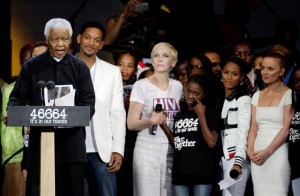
Mandela used his influence on high profile celebrities to create HIV awareness through his 46664 HIV foundation
Mandela knew he had great stature in the world. He was aware that he evoked a sense of hero worship from the high and mighty to the meek and lowly throughout the world. He chose to use his far reaching influence to change the course of treatment, both socially and medically, for AIDS victims in his country and subsequently, the world over. In South Africa, and slowly around the world, social stigma on AIDS begun to suffer severe erosion, because Nelson Mandela stood up and spoke out.
Yes, Nelson Mandela was a great man, a saint that lived among us for too short a while and they just don’t make them like that anymore.
Adios, Madiba and fare thee well!
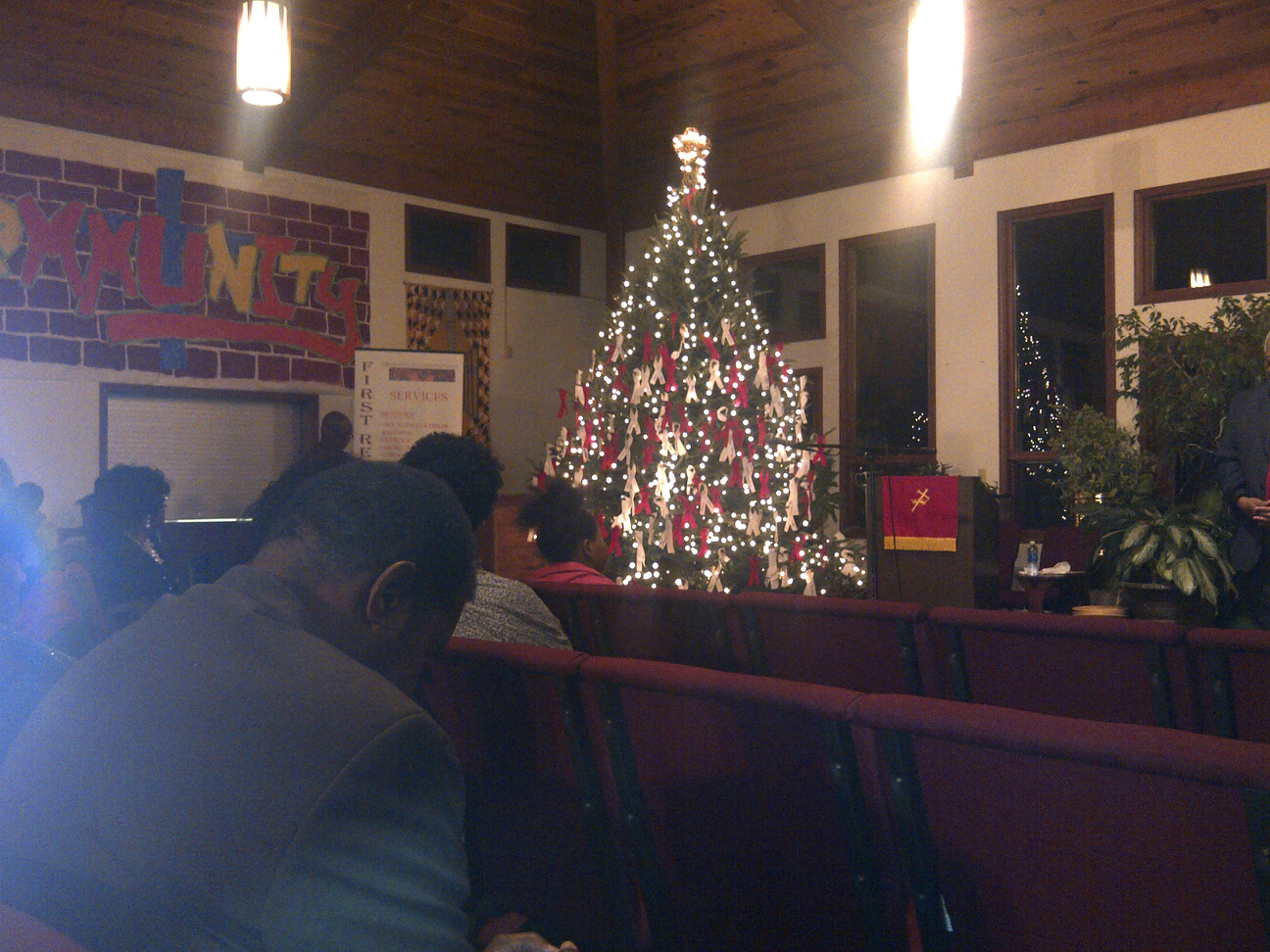
The Tree of Life Celebration – World AIDS Sunday at Metropolitan Interdenominational Church
W.O.M.E.N. took part in this past Sunday’s December 1st World AIDS Day events in which Rev. Edwin Sanders of Metropolitan Interdenominational Church, continued its tradition, now in its tenth year, of infusing the spirit of Christmas into its World AIDS Sunday Community Celebration service. The ceremony calls in part, for placing white ribbons for those who have died from AIDS-related complications and red for those living with HIV/AIDS, calling the names of each person represented by a ribbon, all on a tree fondly referred to as the “Tree of Life”.
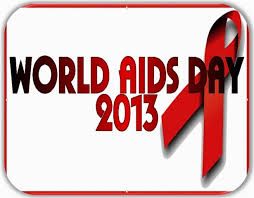
Celebrate World AIDS Day – December 1, 2013 With a Positive Action
HIV impacts all of us in one way or another. Here in the US, more than a million people are living with HIV. These people are all related to someone in one way or another: mother, sister, aunt, friend, cousin, brother, dad, uncle, etc. The federal theme for World AIDS Day 2013, Shared Responsibility- Strengthening Results For an AIDS-FREE Generation. We need to exert more pressure on ourselves, triple all our efforts, to ensure we completely eradicate HIV and AIDS.
And, yes, it can be done. Testing, of course, remains key. This is the first positive step that all of us can take. Get tested. Know your status. Remember, HIV does not discriminate across gender, race or age.
This is the first positive step that all of us can take. Get tested. Know your status. Remember, HIV does not discriminate across gender, race or age.
This is also in line with the general global theme, Getting To Zero, for the celebrations. Getting To Zero reflects the universal goal of achieving a new world status of zero new infections, zero new babies born with HIV and zero deaths resulting from HIV and AIDS related complications. It is probably not in doubt that we all share this desire but the only way to address it is by getting tested. 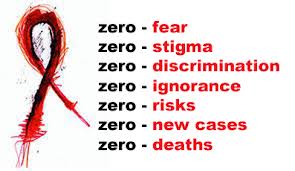 The good news is that when people test negative, they usually do everything they can to maintain that status. This protective behavior forms a large part of the shared responsibility towards a common goal of Getting to Zero.
The good news is that when people test negative, they usually do everything they can to maintain that status. This protective behavior forms a large part of the shared responsibility towards a common goal of Getting to Zero.
It therefore remains very important and cannot be over-emphasized: Get tested today.
W.O.M.E.N. provides HIV testing and counseling Monday through Friday from 9 a.m. to 5 p.m. Call 615-256-3882 to book your appointment today.
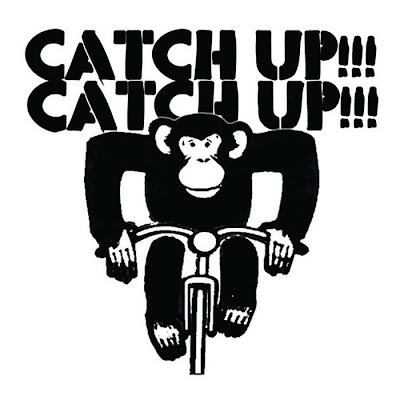
W.O.M.E.N. on a Journey – Fall/Winter (2013-2014) Newsletter
Happy Thanksgiving!
As always, it is a busy holiday season here at W.O.M.E.N. We are also gathering all the holiday news and views at W.O.M.E.N. ready to serve up a sumptuous newsletter for you soon. Remember to look out for our Fall/Winter newsletter in January 2014.
In the meantime, just in case you missed it, do take a moment to catch up on everything we have been up to this past quarter in the spring and summer months, by clicking on the link below:
Please click HERE to view our 2013 Spring/Summer Newsletter!

October is Breast Cancer Awareness Month
W.O.M.E.N. is going PINK for Breast Cancer Awareness Month! Throughout the month of October, we will be sharing important information vital to every woman’s health. There is no better time than now to take the best care of your body you possibly can and we hope to help you every step of the way.
The first step in being proactive regarding Breast Health can be done in the comfort of your own home, a Breast Self-Exam. A woman is suggested to perform a Breast Self-Exam once a month. Johns Hopkins Medical center states, “Forty percent of diagnosed breast cancers are detected by women who feel a lump, so establishing a regular breast self-exam is very important.” While mammograms can help you to detect cancer before you can feel a lump, breast self-exams help you to be familiar with how your breasts look and feel so you can alert your healthcare professional if there are any changes. How should a self-exam be performed? Below are some tips for performing a Breast Self-Exam at your convenience.
In the Shower: Using the pads of your fingers, move around your entire breast in a circular pattern moving from the outside to the center, checking the entire breast and armpit area. Check both breasts each month feeling for any lump, thickening, or hardened knot. Notice any changes and get lumps evaluated by your healthcare provider.
In front of a mirror: Visually inspect your breasts with your arms at your sides. Next, raise your arms high overhead. Look for any changes in the contour, any swelling, or dimpling of the skin, or changes in the nipples. Next, rest your palms on your hips and press firmly to flex your chest muscles. Left and right breasts will not exactly match—few women’s breasts do, so look for any dimpling, puckering, or changes, particularly on one side.
Lying Down: When lying down, the breast tissue spreads out evenly along the chest wall. Place a pillow under your right shoulder and your right arm behind your head. Using your left hand, move the pads of your fingers around your right breast gently in small circular motions covering the entire breast area and armpit. Use light, medium, and firm pressure. Squeeze the nipple; check for discharge and lumps. Repeat these steps for your left breast.
Can you rely on self-exams alone to make sure you are cancer free? Remember, mammograms can detect tumors before they can be felt, so screening is key for early detection. But when combined with regular medical care and appropriate guideline-recommended mammography, breast self-exams can help women know what is normal for them so they can report any changes to their healthcare provider. If you find a lump, schedule an appointment with your doctor, but don’t panic — 8 out of 10 lumps are not cancerous. For additional peace of mind, call your doctor whenever you have concerns.
W.O.M.E.N. has individual Brest Self-Exam cards in our office, which are free to the public! Can’t make it to the office? Just send us your information and we will be happy to send a card to you or your loved one.
National Breast Cancer Awareness Month
October is National Breast Cancer Awareness Month – a time to promote regular mammograms and increase early detection of breast cancer. About 1 in 8 women in the United States will get breast cancer. And every 74 seconds, someone dies of breast cancer.
Any woman can get breast cancer, even those who have no family history of the disease. Two important risk factors for breast cancer are: being a woman and growing old; however young women can and do get breast cancer.
No one knows the cause or how to prevent breast cancer, therefore; early detection is vital. If found early there are more treatment options and a higher survival rate. To increase the chances of early detection, the American Cancer Society recommends the following:
1. Mammograms
A mammogram is an X-tray of the breast and is the best screening tool available for early detection. Yearly mammograms are recommended starting at age 40. Most insurance plans, including Medicare, cover the cost of mammograms. However, if you cannot afford one or do not have insurance, contact the Susan G. Komen breast care helpline at 1-877-465-6636 for free or low cost options in your area.
2. Breast Exam
A breast exam is a physical examination of the breast by a doctor or nurse to check for changes or lumps in the breast or any other problems. Medical experts recommend that women in their 20s and 30s receive a breast exam every three years as part of their health exam. Women 40 and older should receive a breast exam every year.
3. Breast Self Awareness
All women should know what is normal for them. It is important to become familiar with how your breast normally look and feel and report any changes to your doctor. Women ages 20 and older are encouraged to do a self breast exam once a month. Click here to learn how to do a breast self exam.
In addition to the above, contact your doctor if you notice any of the following breast changes:
- Lump, hard knot or thickening inside the breast or underarm area
- Swelling, warmth, redness or darkening of the breast
- Change in size or shape of the breast
- Dimpling or puckering of the skin
- Itchy, scaly sore or rash on the nipple
- Pulling in of your nipple or other parts of the breast
- Nipple discharge that starts suddenly
- New pain in one spot that does not go away.
National Latino AIDS Awareness Day 2012 Photo Contest
Women On Maintaining Education and Nutrition invites photographers (amateurs and novice alike) to enter our National Latino AIDS Awareness Day 2012 Photo Contest! “Hispanics United to End AIDS. Get Tested for HIV“ is the theme for the 2012 commemoration! W.O.M.E.N. wants your best photographs for this event pertaining to:
- Unity
- What HIV/AIDS means to you
- Hispanic Heritage
Online entries can be uploaded starting 12:01 am Eastern Standard Time on October 1, 2012. Deadline for submitting entries is 11:59 pm Pacific Standard Time on October 15, 2012.
Entries will be judged and winners decided October 16, 2012! Prizes include gift cards and winning photographs displayed on our website and social media pages!
Please Submit digital photographs electronically to :
For more details, click here!
Catherine Wyatt-Morley Visits the Today Show
W.O.M.E.N.’s founder and CEO, Catherine Wyatt-Morley is taking on the Big Apple! Catherine is in town to receive the “Women Doing Good” award from SELF Magazine. While visiting NYC, Catherine had the opportunity to sit down with Kathie Lee and Hoda Kobt of the Today Show to discuss “Women Doing Good” and her efforts to educate women about HIV/AIDS.
Recently, Catherine was selected from thousands of nominations received by SELF detailing exceptional strength and determination as told by colleagues, family and friends. Catherine received a $10,000 award to further her efforts to bridge the service gaps to reduce health disparities and will be honored at an award gala hosted by Hoda Kotb, of the Today Show.
Click here to see Catherine on the Today Show.
Catherine Wyatt-Morley Honored By SELF Magazine
Every year SELF Magazine honors Women Doing Good; honorees are real women doing real things to make a difference despite personal adversity. The women honored have used action to heal and shift their energy into creating something positive and uplifting to benefit others.
Catherine Wyatt-Morley, Founder and CEO of Women On Maintaining Education and Nutrition, is among those being honored by SELF for her tireless efforts in the fight against HIV/AIDS.
“My wish is for every woman to be educated about this issue. Married women think they’re immune to the virus. But no one is an exception with AIDS. I want to reach that woman over 50 who thinks she can have unprotected sex or the young girl who is just starting to date”, says Wyatt-Morley.
Catherine Wyatt-Morley, Founder and CEO of Women On Maintaining Education and Nutrition is among those being honored by SELF Magazine for her tireless efforts in the fight against HIV/AIDS.
Because of this wish, Wyatt-Morley has spent the last 18 years battling HIV/AIDS for not only herself; but for future generations, in hopes that her struggles will prevent others from becoming infected with HIV.
Click here to read the full article.



